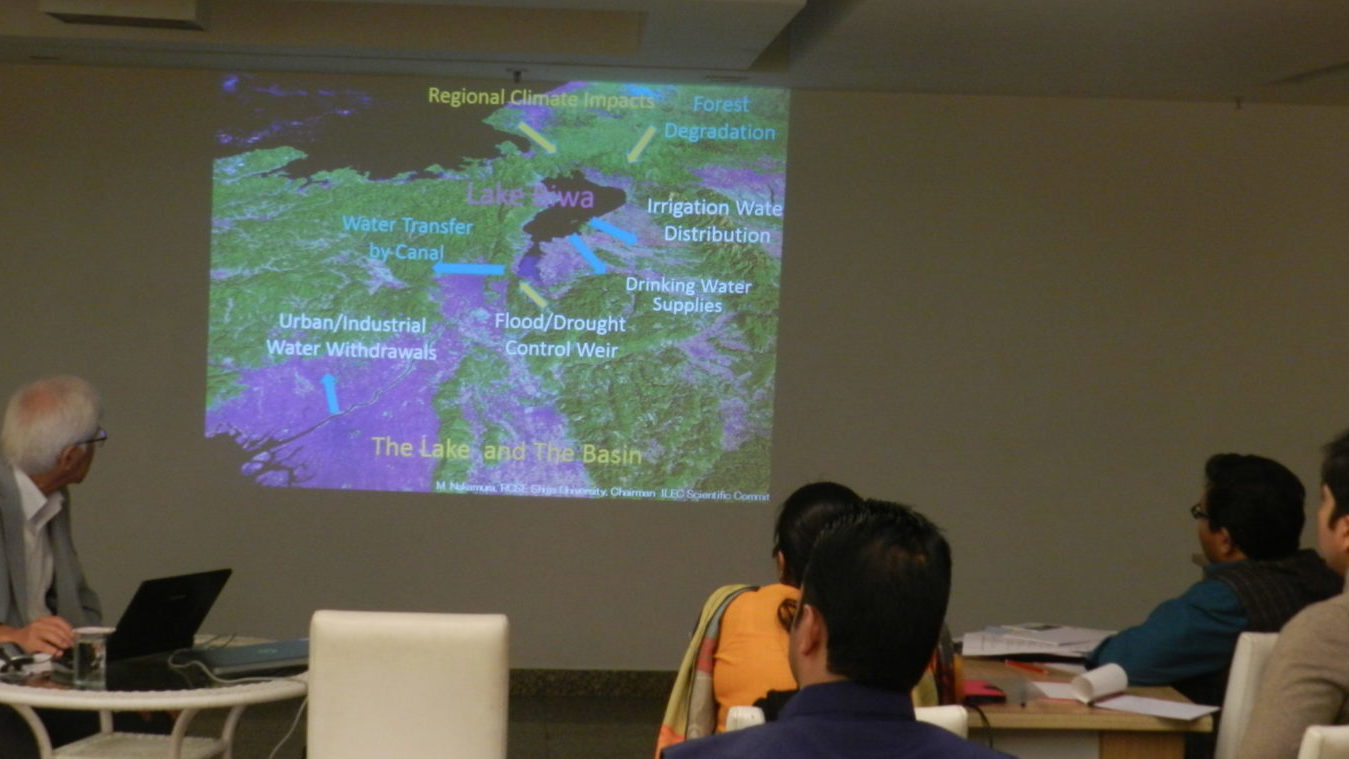
Ecosystem Services Shared Value Assessment for Wetland Catchments
-
Capacity development
-
Integrated management planning
-
Integrating wetlands in water management
The International Lake Management Committee (ILEC) Japan, in collaboration with Wetlands International South Asia conducted a consultation meet on ‘Lakes-4 and Ecosystem Services Shared Value Assessment’ on November 25, 2017 at New Delhi.
Current practices of ecosystem services evaluation entails a scientist and expert driven assessment who inform communities of the ecosystem services they derive and depend on, but a common understanding of issues or ecosystem stresses rarely develops. The Ecosystem Services Shared Value Assessment (ESSVA) tool produced by ILEC, follows a bottom to top approach, where communities living within a wetland catchment evaluate their relationship with the wetland on current and future values, for helping them understand issues and challenges. The evaluation is done via a questionnaire based tool, the application of which provides an ecosystem perception profile of wetland catchment populations at different locations, under a single framework.
ESSVA approach helps build ownership amongst communities for addressing the stresses in their catchments, as they share the services as well as the associated risks. The tool provides an opportunity for investigating ways to engage communities in catchment scale wetland management.
Dr. Masahisa Nakamura (Executive Director and Deputy Director General of ILEC) illustrated the ESSVA framework and its current application in Lakes Nukuru, Baringo and Nyanza. We discussed the different existing frameworks of ecosystem values assessment and how the tool could be applied under integrated risk management assessment taking Lake Tampara, Odisha as a demonstration site.
The meeting was attended by the Governing Body of Wetlands International South Asia, Partners for Resilience :Strategic Partnership of India, Naushad Ali Sarovar Samvardhini (NASS), and Shrishti Eco-restoration Institute. Participants found ESSVA to be highly suited in terms of the ability of the tool to infer perceptions of stakeholders located within upstream as well as downstream stretches of the basin.
